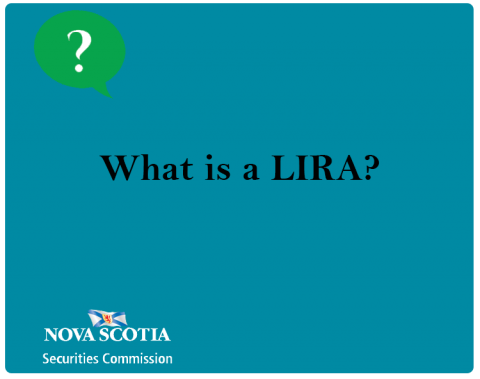Submitted by nsscadmin on

A LIRA is a locked-in retirement account. It is an account which holds locked-in pension funds for former registered pension plan members.
The best way to describe what a LIRA is used for is through an example. John has worked for a company for three years. During those three years he has been enrolled in the company pension plan, making contributions into the plan every time he receives a pay cheque. After three years John decides to leave his job for a new job at a different company. In leaving his job John has also decided to leave the company’s pension plan. The money John has contributed to the company pension plan can be transferred to a LIRA. The amount a person is able to transfer to a LIRA can vary depending on the size of their contributions and whether or not employer contributions are also eligible to be transferred. Be sure to find out all this information before opening a LIRA
Once funds have been transferred into a LIRA they are locked-in and do not become available to the holder until retirement. Upon retirement these funds may be withdrawn after being transferred to an income fund, dependent on the rules and regulations of the LIRA. Withdrawal rules and regulations around LIRAs differ from province to province so be sure to investigate your province’s regulation before deciding how you would like to proceed with withdrawals.
Once money has been transferred into a LIRA no other money may be contributed to it. As with an RRSP, there is no tax applied to the growth of money in a LIRA, but tax must be paid upon the withdrawal of money from a LIRA at retirement.
